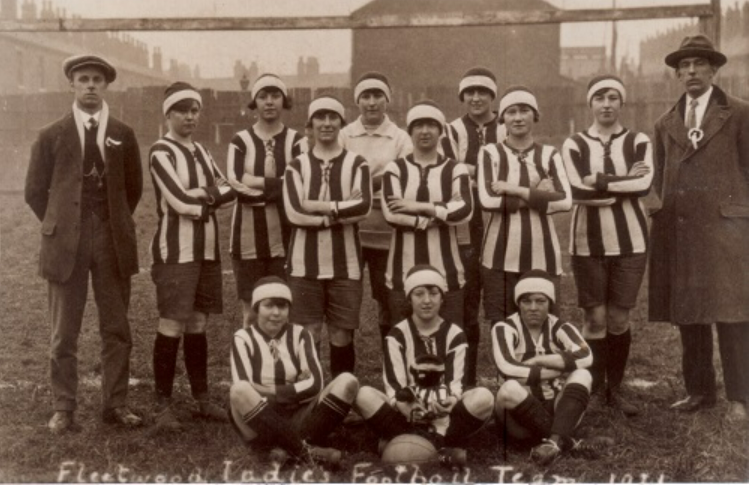This story is one of the winning stories in the 20sStreets competition. The competition invited entrants to research and share stories of the 1920s, searching for the most fascinating local history stories covered by the 1921 Census of England and Wales. There were six winning stories and twelve runners-up entries.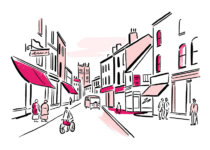
The Fleetwood Ladies FC
By Dr Alexander Jackson, winner (one of five) in the Individual category
The attempted ban of the Football Association on the female sex playing football has left the Fleetwood Ladies football team and their supporters cold. Truth to tell, they look with amused contempt upon the effort of the Association to stamp out ladies football, which they think is actuated by jealousy. They are not going to allow the Association edict to interfere with their recreation, and the local team will to be heard of. – Fleetwood Chronicle, 23 December 1921
You might be forgiven if you haven’t heard of Fleetwood Ladies FC. In 1921 they were one of an estimated 150 teams in the newly thriving world of women’s football. But in December 1921, the Football Association banned its member clubs from hosting women’s football games after it deemed the game ‘quite unsuitable for females.’ Despite this, Fleetwood continued and on Boxing Day 1921, they travelled to Preston to play the famous Dick, Kerr Ladies FC in a game designed to challenge the FA’s claim that it was medically dangerous. After this they played one more game and then, like many women’s football teams, they seem to have disappeared.
Today, you might have heard of DK Ladies FC. In continuing to play for decades after the FA’s ban, they are a key link between the earliest female players of the late nineteenth century and the Lionesses who won the Women’s European Championship at Wembley in the summer of 2022. But what of the others who helped show that football was not just for men?
Starting with a single postcard, it’s been possible to recover this lost team of pioneering women. Through the census, digitized newspapers, and other sources of local history, we can uncover a story of short-lived sporting triumphs, lost potential, and lives shaped by the personal tragedies of the First World War.
So, let’s meet the team as the 1921 census found them. We are fortunate that the Fleetwood Chronicle printed a different photograph of the team and crucially, added the full names of the players, not just their initials. Using this photograph, an initial identification has been made of some of the players and officials.
Starting on the back left, we have Frank Porter (36), a gas-meter inspector, former Fleetwood FC goalkeeper, and the team trainer. Next is Martha Davis (18), button polisher; Violet Brown (unknown); Gladys Holdsworth (20), domestic servant; Florence Rance (20), unemployed button cutter, Jane Collinson (22), slat fish curer; Nellie Liveley (unknown), Margaret Shaw (18), fish curer; Nellie Sharp (unknown). On the far right is the club secretary, James Henry Longworth (58), an unemployed fish box repairer. Sitting on the ground is the team’s youngest player, Mary Willan (15), servant; Annie Cullen (19), a button maker; and Mary Elizabeth Ellwood (18), a machinist.
From various census’ we find that they were almost all Fleetwood born and bred, living, and working in this small town situated on the north-west of the Fylde Coast in Lancashire, England. Its layout is distinctive since much of it was designed as a model town in the 1840s. Originally it prospered as a transport hub. With no direct train route from London to Scotland, travellers sailed from Fleetwood by steamer up the west-coast. However, when a direct route was created the town’s fortunes faded. In the 1870s the focus turned to fishing, with new docks making it third largest fishing port in the country and with a population of 15,875 by 1911.
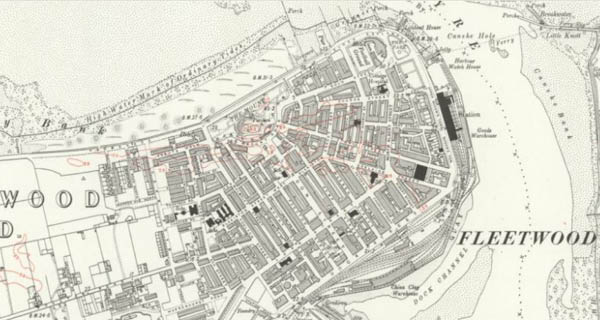
Ordnance Survey Map of Fleetwood, 1914. Note the distinctive spokes radiating from the Mount. Reproduced with the permission of the National Library of Scotland.
Whereas women’s teams emerged in many urban areas during the First World War, there is no record of this happening in Fleetwood. Instead, the first mentions of the team come from late 1920 when Fleetwood Ladies were to play ‘The Rest’ to raise funds for Fleetwood FC, who had just moved to a new ground, and the Discharged and Disabled Soldiers and Sailors Federation.
It is perhaps this wartime link that explains the involvement of James Henry Longworth as the club’s secretary. In August 1915, his youngest son, David, lied about his age to join the British army, aged just sixteen. He was one of an estimated 170,000 to 190,000 boys who successfully joined up. David was discharged in August 1916, having apparently served seven months in France. In 1918 he was finally old enough and re-joined the army, either as conscript or as a volunteer. At this stage he was still too young for frontline service, which was still restricted to those above nineteen years of age. However, the German Spring Offensive of March 1918 led to this being reduced to eighteen years and seven months and later to eighteen years and six months. David was now eligible and was drafted to France, joining the 2nd Battalion of the Royal Inniskilling Regiment in the 109th Brigade, 36th (Ulster) Division. He was killed on the 3 October 1918.
Like many women’s teams, Fleetwood Ladies helped raise money for Ex-Servicemen and War Memorials. Perhaps James’s involvement was one way of coping with the death of his son. Every year between 1919 and 1921 the family paid for David’s death to be mentioned in the Remembrance section of the Fleetwood Chronicle. They also paid over £1, a substantial amount of money for a working-class family, to add their own inscription to David’s headstone in Belgium. All of this is circumstantial evidence, but it does provide a possible reason for why James involved himself in a club that raised an estimated £3,000 for charity.
They raised this by playing 27 recorded fixtures between December 1920 and December 1921. Of these, only six were played in their hometown. The rest were played across Lancashire, Cumbria (Kendal), North-Yorkshire (Middlesbrough) and London (Woolwich) and twice in Belfast in Ireland. Some of the venues were more modest grounds but they also played at the grounds of Middlesborough FC and Burnley FC. They attracted over 90,000 spectators to their games, showing there was genuine interest in women’s football.
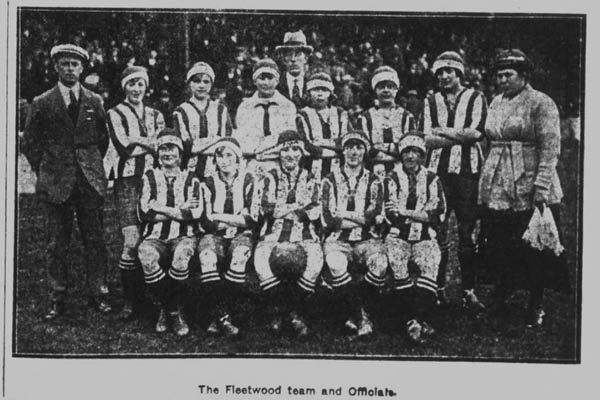
Fleetwood at Turf Moor, Burnley (Burnley Express, 4 June 1921). Courtesy of the British Newspaper Archive.
Perhaps the most exciting and intriguing games that the club enjoyed were two in the summer of 1921 in Belfast. These took place during the Irish War of Independence. In the first half of 1921 over 1,000 people had been killed. In July, a ceasefire would be signed, marking the end of three years of hostilities between the British Government and Irish Republicans, although violence continued afterwards. A formal treaty would be signed in December 1921 and ratified in 1922, leading to the creation of the Irish Free State, forerunner to the Republic of Ireland.
Despite the violence, Belfast was a key site in the emerging world of women’s international football. In 1917, Mrs Diana Scott, wife of the Secretary of Glentoran FC had helped organize an international game between regional sides billed as Ireland and England, which attracted between 10-20,000 spectators. This was part of her wider work in using football to support wartime charities, especially those connected to the Unionist community. In 1921, Fleetwood would represent England in two games, the first in aid of the Belfast Hospital for Women and Children, the second for Earl Haig’s Warrior Fund. For James Henry Longworth, this was perhaps a chance to visit a city and community closely connected to the unit that his son David had served and died with.
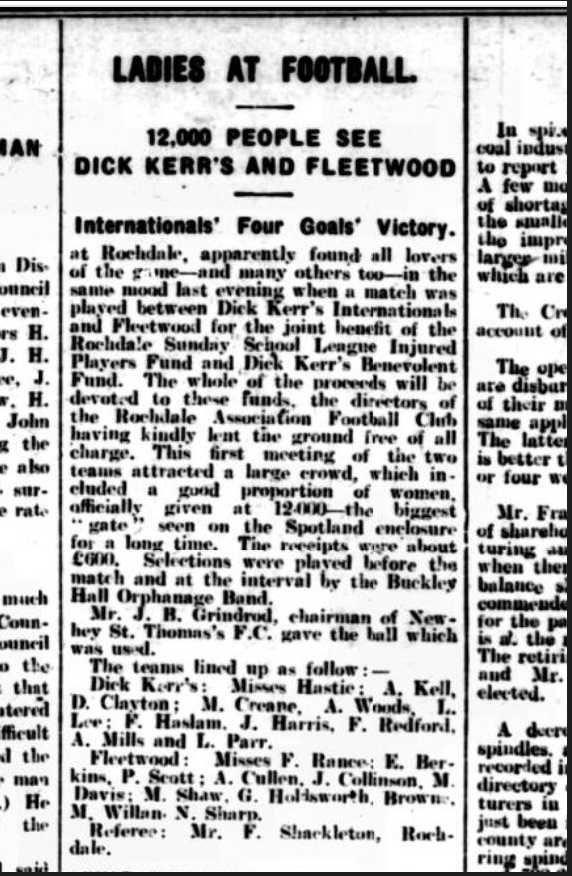
Match report for Fleetwood Ladies vs Dick,. Kerr Ladies at Rochdale (Rochdale Times, 27 April 1921.) Courtesy of the British Newspaper Archive
After these games in the summer of 1921, the club only played a few more games. After the FA’s ban was introduced, an English Women’s Football Association was formed, with James Henry Longworth becoming one of it’s Vice-Presidents. Fleetwood were one of twenty-three clubs who entered the inaugural EWFA Cup but there is no record of them completing a game. It seems they stopped playing and in 1926, after ‘long and patient suffering’ James Henry Longworth died, aged 63.
And what of the players? We get glimpses of them through the 1939 Register, marriage, and death records. Most seem to have remained in Fleetwood and the surrounding area. The Football Association may have stymied them over 100 years ago, but today we can ensure the Fleetwood Ladies are heard of. Their story, like so many others, is the story of women fighting for equal access to a game that should be for all, a story that is as pertinent today as it was then.
After these games in the summer of 1921, the club only played a few more games. After the FA’s ban was introduced, an English Women’s Football Association was formed, with James Henry Longworth becoming one of it’s Vice-Presidents. Fleetwood were one of twenty-three clubs who entered the inaugural EWFA Cup but there is no record of them completing a game. It seems they stopped playing and in 1926, after ‘long and patient suffering’ James Henry Longworth died, aged 63.
And what of the players? We get glimpses of them through the 1939 Register, marriage, and death records. Most seem to have remained in Fleetwood and the surrounding area. The Football Association may have stymied them over 100 years ago, but today we can ensure the Fleetwood Ladies are heard of. Their story, like so many others, is the story of women fighting for equal access to a game that should be for all, a story that is as pertinent today as it was then.
Sources
The collections of the National Football Museum, British Newspaper Archive, Ancestry, FindmyPast, the British Library and National Library of Scotland.
Women’s football website: https://www.donmouth.co.uk/womens_football/womens_football.html
The help of Stephen Bolton
For more information about the National Football Museum’s Collections and how to use the museum’s archive please see

